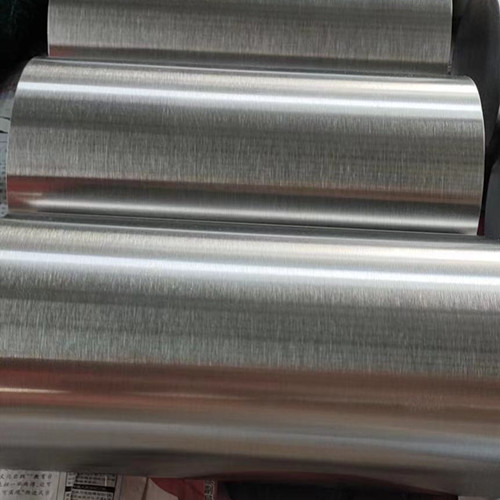Titanium alloy
As a new alloy material, titanium alloy has great advantages in new energy, which is unmatched by other metals, but its price is also more expensive. However, titanium alloy has been widely used in many fields because of its characteristics.

high strength
The density of titanium alloy is usually about 4.51g/cm3, which is only 60% of that of steel. The strength of some high-strength titanium alloys exceeds that of many alloy structural steels. Therefore, the specific strength (strength / density) of titanium alloy is higher than that of other metal structural materials, and parts with high unit strength, good stiffness and light weight can be produced. Titanium alloy is used for aircraft engine parts, skeleton, skin, fasteners and landing gear.
High thermal strength
It can work continuously at the temperature of 450 ~ 500 ℃. The two titanium alloys are still very high in the range of 150 ℃ ~ 500 ℃. The specific strength of aluminum alloy decreased significantly at 150 ℃. The working temperature of titanium alloy can reach 500 ℃, while that of aluminum alloy can be lower than 200 ℃.
Good corrosion resistance
Titanium alloy works in twisted seawater, and its corrosion resistance is much better than that of stainless steel. It is especially resistant to pitting corrosion, acid corrosion and stress corrosion; Resistant to alkali, chloride, chlorine organic matter, nitric acid and sulfuric acid.
Good low temperature performance
Titanium alloy can still maintain its mechanical properties at low and ultra-low temperatures. Titanium alloys with good low temperature properties and very low interstitial elements (such as TA7) can maintain a certain degree of plasticity at - 253 ° C. Therefore, titanium alloy is also an important low temperature structural material.
High chemical activity
Titanium has high chemical activity and will react strongly with O2, N2, H2, Co, CO2, water vapor, ammonia, etc. in the atmosphere. When the carbon content is more than 0.2%, it is always in the titanium alloy. When the temperature increases by 600 ℃, titanium absorbs oxygen and forms a high hardness hardened layer; Increase of hydrogen content; When the temperature increases and interacts with N, a hard surface layer of tin will also be formed. Embrittlement layer will also be formed. The depth of hard and brittle surface layer produced by absorbing gas can reach 0.1 ~ 0.15mm, and the hardness is 20% ~ 30%. Titanium also has high chemical affinity and can reach the friction surface.
Low resonance coefficient
Thermal conductivity of titanium λ= 15.24w / (m · K) is about 1 / 4 of nickel, about 1 / 5 of iron and about 1 / 14 of aluminum. The rate is about 50%. The elastic modulus of titanium alloy is about 2 ~ 3 stainless steel.

